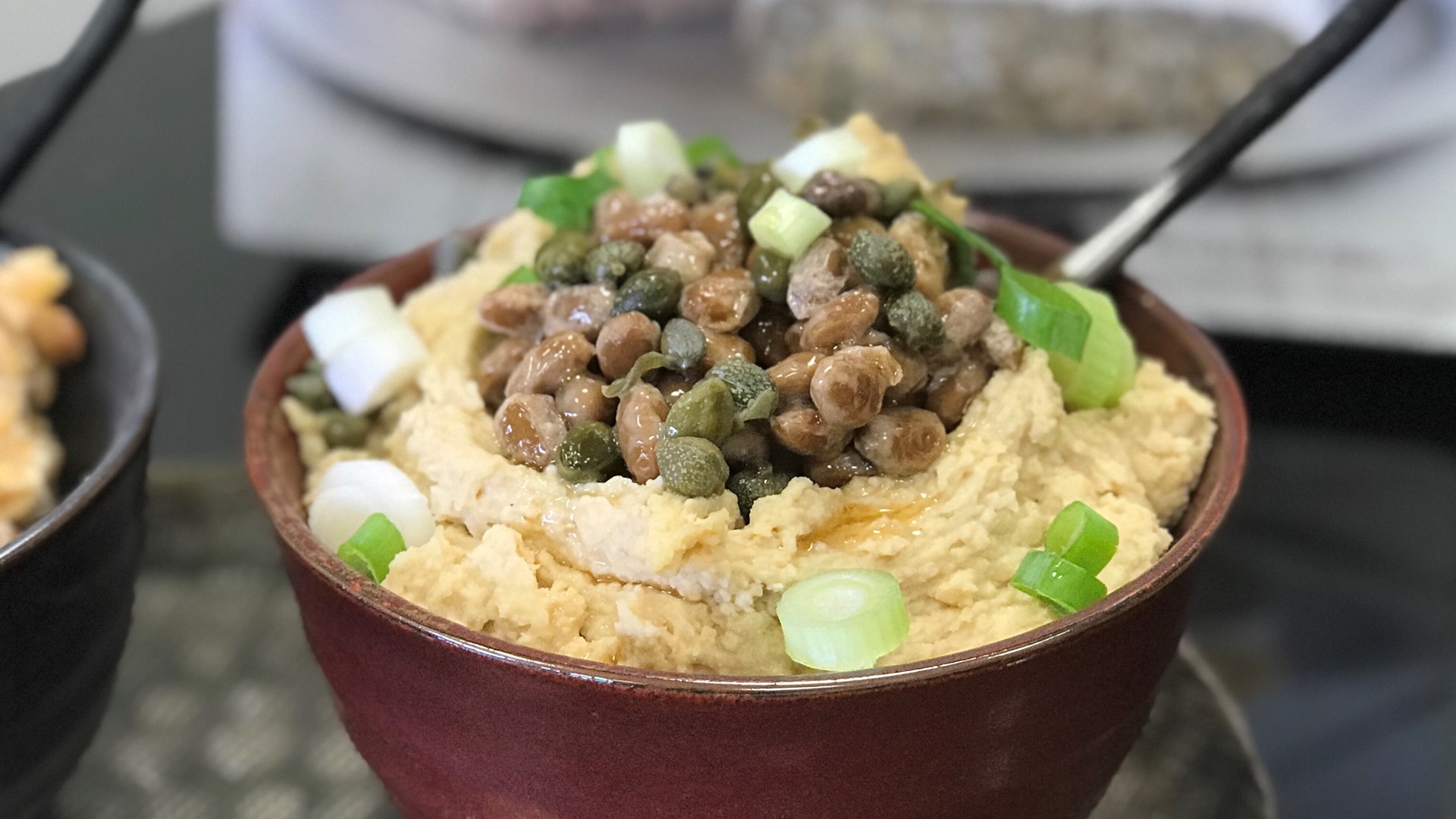SEATTLE — Although uncommon in the United States, fermented beans and grains are popular foods in many other countries. Co-author of new fermentation guide Miso, Tempeh, Natto & Other Tasty Ferments, Kirsten Shockey, is here to introduce us to these Asian foods.
The new book demystifies the process of making them home and, "Opens the door to amazing culinary adventures and incomparable umami flavors."


NATTO RECIPE
From Miso, Tempeh, Natto & Other Tasty Ferments, by Kirsten Shockey and Christopher Shockey
Yield: 4-5 cups
This is a basic recipe for classic natto. There isn't a whole lot of space for creativity. As we developed a taste for the biofilm, we discovered that if you use a little more water when inoculating the beans, you will end up with a little more biofilm in your natto.
FERMENTATION: 20 hours (30 hours for a more pungent natto)
Ingredients
- 2 1/2 cups (450 g) soybeans, preferably the small natto-style beans
- Natto starter (B. subtilis var. natto - Use the quantity of natto starter specified by the manufacturer of your starter. It's usually in the range of 1/8 to 1/2 teaspoon (the variation stems from whether the starter is pure spores or spores dispersed in rice flour)
- Boiling water, for warming the containers and inoculation
Preparation
- Soak the soybeans for 18 to 24 hours. Rinse thoroughly.
- Steam the soybeans. We find that cooking the soybeans under pressure works particularly well when making natto and koji ferments, as the beans have a superior texture. The texture of the beans is less of a concern for miso, and one must be careful to not overcook beans for tempeh. When steaming beans in a pressure cooker, first pick out any split soybeans or loose hulls after soaking. These could clog the pressure cooker vent. Pour a couple of inches of water into the pot, set the steamer basket in place, add the beans, and close it up. Cook for 30 minutes at 15 pounds of pressure or for 45 minutes at 10 pounds of pressure. If you have an electric pressure cooker, use the steam or bean setting for 45 minutes on high pressure. Soybeans soaked and hulled for tempeh take 10 minutes when steamed under high pressure. We don't recommend boiling beans in a pressure cooker because the hulls and foam get all over the pot, and despite precautions, we had trouble with some batches. We're not going to lie, we love our electric pressure cooker. We cooked a lot of beans while writing this book, and buying a programmable electric pressure cooker was a game-changer. We have a 6-quart pot, and we have the best results with 2 pounds or less of the normal-size soybeans.
- Pour a bit of boiling water into a bowl and a shallow glass or stainless-steel casserole dish to sanitize and warm them; let sit for 30 seconds and then pour the water out into your sink. Pour 1/4 to 1/2 cup of boiling water into the bowl, then add the starter culture and mix thoroughly. Add the hot soybeans to the starter culture and mix carefully.
- Transfer the beans to the casserole dish and spread in a thin layer, preferably about 1/2 to 1 inch deep, and no thicker than 2 inches.
- Place a sheet of aluminum foil or plastic wrap across the top of the casserole dish, crimping the edges to seal tightly. While holding the aluminum foil or plastic wrap taut so that it doesn't crush the beans, poke a series of air holes across the top, about 11/2 inches apart in a grid pattern. If you're using plastic wrap, then lay it directly on the beans.
- Place the natto in a relatively humid incubation chamber at 99°F/37°C to 113°F/45°C; we have had the best results at 106°F/41°C. Incubate for 20 hours, or until you smell a nutty, alkaline aroma and you see a white film across the top of the beans. Run a spoon across the top of the beans. The spoon should stick slightly, and threads should form behind it.
- Place the natto in a sealed container and refrigerate. Ideally, let it age for 1 week for deeper flavor. It will keep in the refrigerator for 4 to 5 weeks.
Watch New Day Northwest 11 AM weekdays on KING 5, and streaming live on KING5.com. Connect with New Day via Facebook, Twitter, Instagram.

